Gender and Education
in Kenya
Critical African Studies in Gender and Sexuality
Series Editors: Besi Brillian Muhonja (James Madison University) and Babacar MBaye (Kent State University)
Series Advisory Board
Nkiru Nzegwu, Achola Pala, Melinda Adams, Binyavanga Wainaina, Ashley Currier, Betty Wambui, Jane Rarieya, Olufemi Taiwo, Cheikh Thiam
Critical African Studies in Gender and Sexuality publishes innovative, interdisciplinary research on intersections of gender, sexuality, and other political, social, economic, cultural, and geographic identity markers. The series has particular interest in groundbreaking scholarship on herstories/histories, elements and politics of gender and sexuality that center critical African thought and philosophies within global contemporary theoretical debates across the disciplines. Thus, manuscripts exploring gender relationships, queer identities, sexualities, masculinities, and femininities within both Africa and its Diaspora in interdisciplinary contexts are highly encouraged.
Recent Titles in the Series
Gender and Education in Kenya edited by Esther Mukewa Lisanza
Women and the Nigeria-Biafra War: Reframing Gender and Conflict in Africa edited by Gloria Chuku and Sussie Okoro
Gender and Sexuality in Senegalese Societies edited by Babacar MBaye and Besi Brillian Muhonja
Child Rape in Ghana: Lifting the Veil by Martha Donkor
Through the Gender Lens: A Century of Social and Political Development in Nigeria edited by Funmi Soetan and Bola Akanji
Gender and Development in Nigeria: One Hundred Years of Nationhood edited by Funmi Soetan and Bola Akanji
Gender, Ethnicity, and Violence in Kenyas Transitions to Democracy: States of Violence by Lyn Ossome
Womanhood and Girlhood in Twenty-First Century Middle Class Kenya: Disrupting Patri-centered Frameworks by Besi Muhonja
Dedication
To our mothers who taught us by example that women and girls can break the glass ceiling in any field.
Gender and Education in
Kenya
Edited by
Esther Mukewa Lisanza
Contributions by Mokaya Bosire,
Damaris Choti, Zulekha R. Khamisi,
Leonora Anyango-Kivuva,
Esther Mukewa Lisanza,
Catherine Mwihaki Ndungo,
and Anne Rotich
LEXINGTON BOOKS
Lanham Boulder New York London
Published by Lexington Books
An imprint of The Rowman & Littlefield Publishing Group, Inc.
4501 Forbes Boulevard, Suite 200, Lanham, Maryland 20706
www.rowman.com
6 Tinworth Street, London SE11 5AL, United Kingdom
Copyright 2021 by The Rowman & Littlefield Publishing Group, Inc.
All rights reserved. No part of this book may be reproduced in any form or by any electronic or mechanical means, including information storage and retrieval systems, without written permission from the publisher, except by a reviewer who may quote passages in a review.
British Library Cataloguing in Publication Information available
Library of Congress Cataloging-in-Publication Data
Library of Congress Control Number: 2021933211
ISBN 978-1-7936-3492-4 (cloth : alk. paper)
ISBN 978-1-7936-3493-1 (electronic)
 The paper used in this publication meets the minimum requirements of American National Standard for Information SciencesPermanence of Paper for Printed Library Materials, ANSI/NISO Z39.48-1992.
The paper used in this publication meets the minimum requirements of American National Standard for Information SciencesPermanence of Paper for Printed Library Materials, ANSI/NISO Z39.48-1992.
Contents
Esther Mukewa Lisanza
Catherine Mwihaki Ndungo
Mokaya Bosire and Zulekha R. Khamisi
Esther Mukewa Lisanza
Anne Rotich
Damaris Choti
Leonora Anyango-Kivuva
Esther Mukewa Lisanza
Esther Mukewa Lisanza
At the time of writing this book, the Kenyan education system is undergoing change. The 8-4-4 system of education (i.e., 8 years of primary education, 4 years of secondary education, and 4 years of university education) which has been in operation since 1985, is being replaced by a new system of education: 2-6-6-3 (i.e., 2 years of pre-primary education, 6 years of lower and upper primary education, 6 years of junior and senior high school, and 3 years of university). The new system came into effect in 2017 and was rolled out to pre-primary schools in January 2018. The Kenyan government has been at the forefront of trying to better the education it offers to its citizens. Among many things which the Kenyan government has done to better the education of its citizen is the commitment to close the gender gap in education.
The commitment by the government to close gender gap in education has been there since the country gained its independence in 1963. This is well captured by the quote below:
Since independence Kenya has been pursuing policies towards the realization of equal access to education of both boys and girls as demonstrated by being signatory to International Conventions and Agreements on human rights and gender equality. (Republic of Kenya, 2015, p. 1)
Since the Kenyan government is a signatory to International Conventions and Agreements on human rights and gender equality, its commitment to gender equality in education and access to education for girls and boys and women and men is definite. For instance, the following initiatives have been put in place:
1.Since 1996, the Ministry of Education has had a policy in place on readmission of school age girls who get pregnant while in school. Also, there is affirmative action for girls and women to further their education through allocation of bursaries and scholarships (Republic of Kenya, 2015).
2.In 2003 the government introduced free primary education. This led to an increase in primary school enrolments from 5.9 million in 2002 to 7.2 million in 2003. In 2008 the enrolment rose to 8.2 million which further rose to 8.6 million in 2009 (Wango et al., 2012).
3.In 2008 free day secondary education was introduced. This greatly boosted girls and boys enrolment and transition from primary to secondary school (Wango et al., 2012).
4.In 2007 the Gender Policy in Education was officially launched and dispersed to the implementing units. The policy highlighted key gender concerns in education such as negative sociocultural practices and attitudes which impede especially girls access to schooling; teaching and learning environment that is not conducive to girls and boys education; stereotyping in learning materials and in actual class teaching; and drop out of school girls due to pregnancy and early marriages, among other practices (Wango et al., 2012).
However, 8 years after the 2007 Gender Policy in Education, it became evident that there was a need to review the policy because of the implementation challenges and the need to align the policy with the new legal and policy frameworks in the country. These include the Constitution of Kenya 2010... and the National Education Sector Plan 20132018 (Republic of Kenya, 2015, p. 6). The review of the 2007 policy was also necessitated by the fact that the policy was not adequately implemented and as a result, the existence of gender disparities in education. Therefore, there was a need for more strategies and interventions (Republic of Kenya, 2015). Thus, in 2015 the Ministry of Education, Science and Technology embarked on the review of the 2007 Gender Policy in Education.
The objective of the 2015 Gender Policy in Education and Training is to eliminate all gender disparities and inequalities in education, create a gender responsive learning and work environment and enhance gender sensitive and responsive governance and management in the education sector (Republic of Kenya, 2015, p. 6). Specifically, the policy aims to:

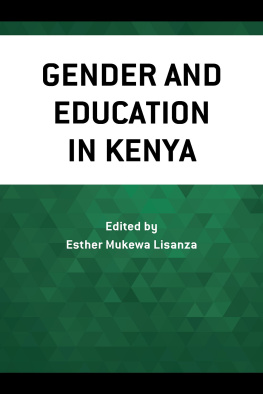

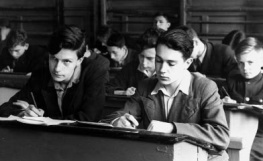
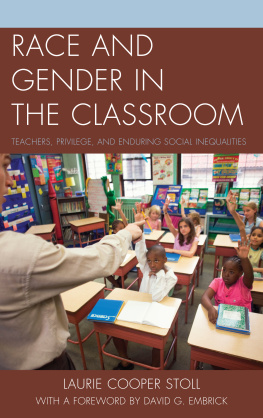
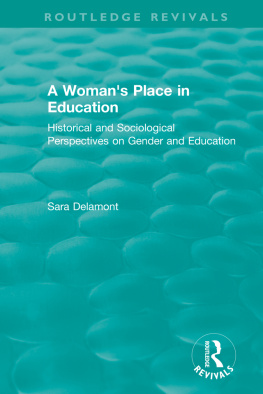
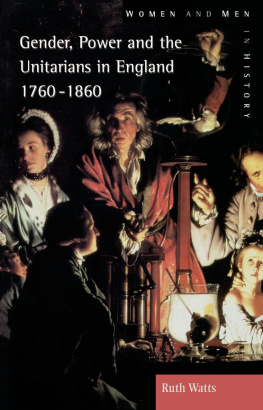

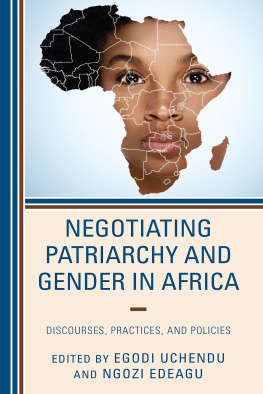
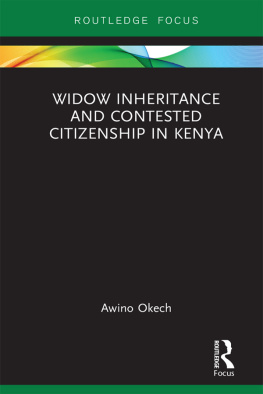
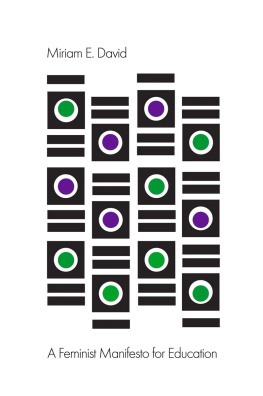
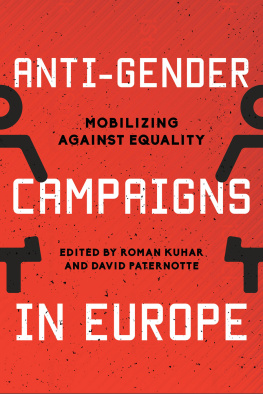

 The paper used in this publication meets the minimum requirements of American National Standard for Information SciencesPermanence of Paper for Printed Library Materials, ANSI/NISO Z39.48-1992.
The paper used in this publication meets the minimum requirements of American National Standard for Information SciencesPermanence of Paper for Printed Library Materials, ANSI/NISO Z39.48-1992.